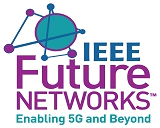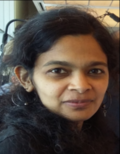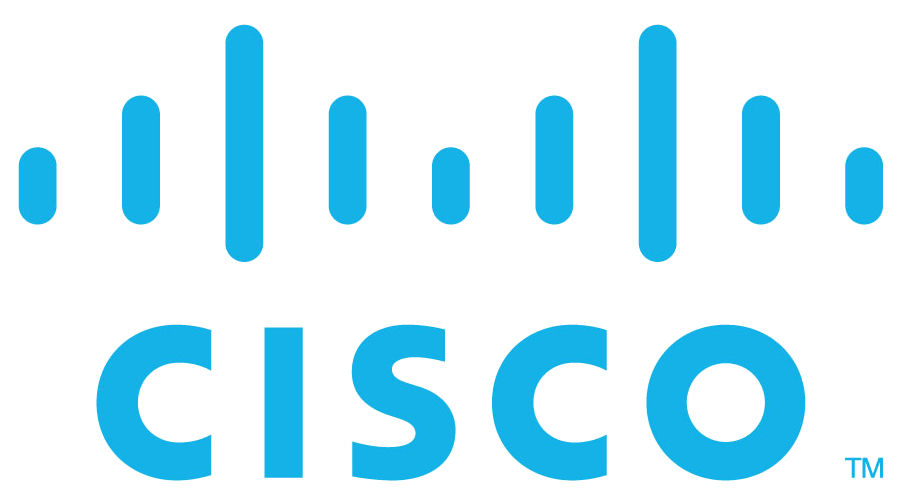Industry Invited Speakers
Kenneth Duda
Arista Networks, USAVisit Homepage
8th Jan 2021
YouTube Link of the Video
Kenneth Duda is a pioneer in high-performance networking software and lead architect of Arista Networks EOS, a stateful modular operating system for all Arista Networks products. He is also the co-author of network virtualization specifications including VXLAN with VMware and NVGRE with Microsoft. From 2005 to 2008, Ken was also the Acting President of Arista Networks.
Prior to joining Arista Networks, Ken was the CTO at There.com, where he played a lead role in designing a real-time 3-D distributed system that scaled to thousands of simultaneous users. Ken was also the first employee of Granite Systems and led the software development effort for the Catalyst 4000 product line after the acquisition by Cisco.
Ken has 3 simultaneous engineering degrees from MIT and holds a Ph.D. in Computer Science from Stanford University.
Timothy Lee
IEEE FNI, USAVisit Homepage
7th Jan 2021
YouTube Link of the Video
The much anticipated 5G rollout is just beginning in 2020 and will continue its trajectory to potentially impact many use cases including mobility, smart factories, AR/VR, IoT and healthcare. 5G supports the decentralization of computing resources by bringing new capabilities to the edge. Through wireless communications that is transitioning from 4G LTE to new 5G bands (low-, mid- and millimeter-waves), we are facing new technical challenges that must be met to make the 5G revolution successful. This talk will summarize recent developments in microelectronics and advanced packaging in near future as well as project considerations for 6G.
Tim Lee, a Boeing Technical Fellow, based on Huntington Beach, CA is involved in the R&D of advanced microelectronics for compute, communications and sensing applications. He has over 35 years of experience in the area of microwave device technology, microwave circuit design, and hardware development for aerospace applications. He has been active in the IEEE activities that promotes the use of technology that benefits humanity. He is currently on the IEEE Board of Directors, serving as the Director for Region 6 (Western US). He is the Co-Chair of the IEEE Future Networks Initiative and the Co-Chair of the FNI Millimeter-waves and Signal Processing Technical Working Group. In the IEEE Electronics Packaging Society, he serves as the Co-Chair of the TWG on 5G and on Aerospace / Defense. He is also the General Chair of the IEEE 2020 International Microwave Symposium (https://ims- ieee.org). In 2015, he served as the President of the IEEE Microwave Theory and Techniques Society (MTT-S) which is the technical home for all microwave engineer students and professionals.
Kiran Mukkavilli
Qualcomm Wireless Research, USAVisit Homepage
8th Jan 2021
YouTube Link of the Video
5G NR has been through couple of releases in 3GPP (Rel-15 and Rel-16) and is now in the middle of the third release (Rel-17). Market adoption has been keeping pace with the standards releases as seen through 5G spectrum allocation, network deployment and availability of devices across the world. 5G adoption is quicker and stronger than any of the previous generations at this stage of standardization and product development. With a strong foundation in place for 5G adoption, we take a quick look at technologies and the new services/verticals enabled by 5G and how this sets 5G apart. We revisit the vision of 5G and the extent to which it is fulfilled by existing solutions. We then present a few exciting technologies on the horizon that are likely to shape the evolution of 5G going forward and pave the way for 6G.
Dr. Kiran Mukkavilli is a Sr. Director of Engineering in Qualcomm Wireless Research where he currently leads the systems research team for sub-7GHz technologies of 5G. He joined Qualcomm in 2003, holds more than 150 granted U.S. patents, and has been involved in system design, standardization, implementation and commercialization of a variety of projects at Qualcomm. He was one of the principal architects of MediaFLO, a mobile broadcast solution from Qualcomm, and played a key role in the product development, standardization and commercialization efforts. He was also the systems design lead responsible for commercialization of the UMTS modem in Qualcomm Snapdragon 800/801 products. In his current role, he is responsible for R&D efforts for PHY/MAC system design, standardization and prototyping for Sub 7GHz aspects of 5G NR. He successfully led Qualcomm’s effort to set up industry’s first end to end 3GPP Rel 15 spec compliant 5G NR call with the leading infra vendors using proto UE implementation. Dr. Mukkavilli received his M.S. and Ph.D. in electrical engineering from Rice University and holds Bachelor of Technology from Indian Institute of Technology, Madras.
Laxmi Mukund
CISCO, IndiaVisit Homepage
7th Jan 2021
YouTube Link of the Video
MAC addresses on devices have been used for tracking users on metro stations and trains and in retail chains and malls. Though these uses of MAC address tracking seem harmless, there might be other applications that use the MAC address which intrudes on individual privacy. PII protection and need for privacy has motivated many device vendors to adopt mac randomization. Windows 10, Apple IOS14, Android are all randomizing the MAC. While it offers privacy to quite an extent, it breaks lot of traditional device identification and classification in networking products. We can no longer rely on the mac as a way to identify and onboard devices. Many of the networking functions use MAC as the primary key. The talk will focus on MAC randomization adoption on different devices, the networking paradigms it might break and potential ways networks and protocols can adapt to support devices which have MAC randomization enabled and thus privacy.
Laxmi Mukund is a Principle Engineer at Cisco with a master's in computer science and networking and about 20 years of industry experience. She has worked on various routing, switching and security products across Enterprise, Service Provider and Data Centers. Her main contributions have been in the architecture, design and development of features in the areas of core routing and switching, prefix convergence, Netflow, access control, quality of service, secure policy access and LISP (Locator Identity Separation Protocol). She is currently working on security with privacy as an important component. Understanding customer key requirements and translating them into usable features, reviewing network topology designs and troubleshooting complex customer network topologies has been part of her journey through out. She has a Cisco pioneer award and patents in the area of networking.












































